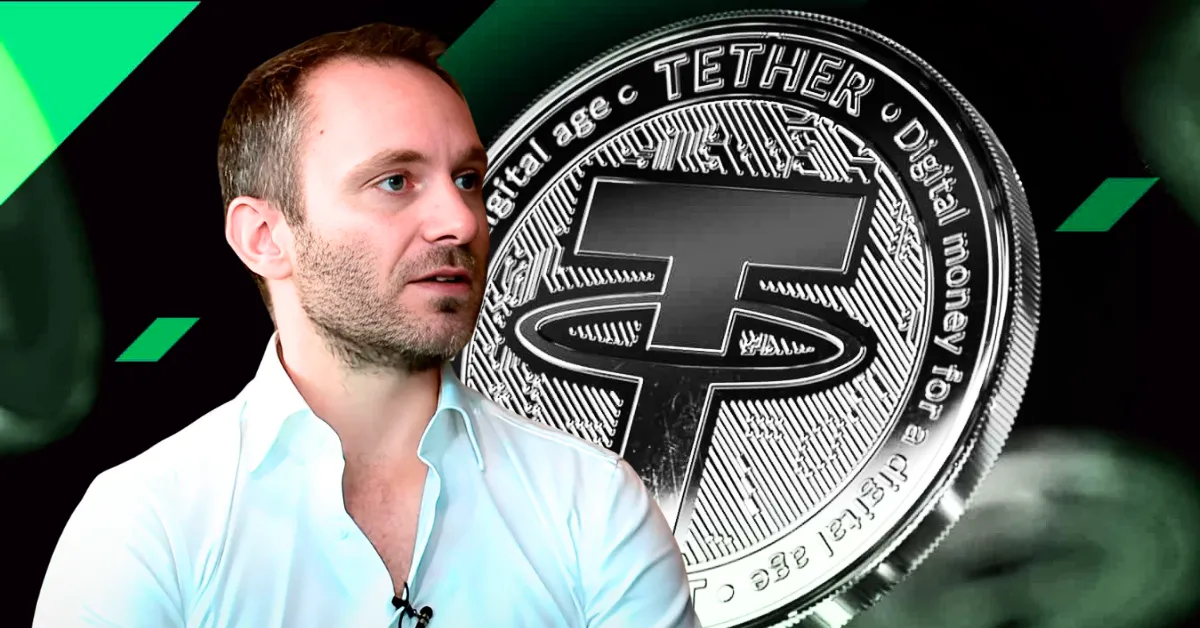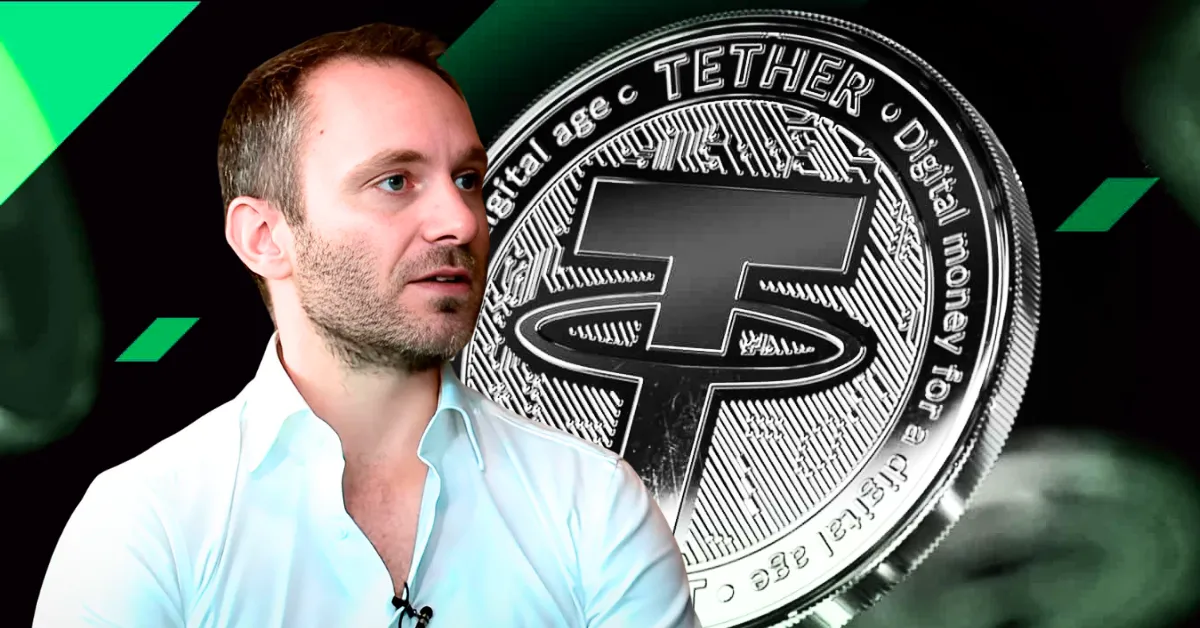Tether, the company behind the world’s most widely used stablecoin, USDT, is making a bold strategic pivot that could redefine its role in the cryptocurrency ecosystem. CEO Paolo Ardoino’s announcement that Tether aims to become the largest Bitcoin miner by the end of 2025 is more than just an ambitious target—it represents a significant shift in the company’s business model and a potential game-changer for the Bitcoin network and the broader digital economy.
Beyond Stablecoins: Why Bitcoin Mining?
For years, Tether has been primarily known for its USDT stablecoin, which has become a cornerstone of the cryptocurrency market. USDT provides liquidity, facilitates trading, and serves as a safe haven during market volatility. However, Tether has faced scrutiny over its reserve transparency and regulatory compliance. Diversifying into Bitcoin mining offers several strategic advantages:
Profitability and Revenue Diversification
Bitcoin mining, despite its energy-intensive nature, can be highly profitable, especially for entities with access to cheap energy and efficient mining hardware. Tether’s substantial profits from USDT issuance can be reinvested into mining operations, creating a new revenue stream that reduces reliance on stablecoin issuance. This diversification could enhance Tether’s financial stability and resilience in the face of regulatory pressures.
Network Security and Decentralization
Ardoino has emphasized the importance of Bitcoin mining for network security. By becoming a major miner, Tether can contribute to the Bitcoin network’s decentralization and resilience. This involvement could bolster Tether’s reputation within the crypto community and demonstrate its commitment to the long-term health of the Bitcoin ecosystem.
Sustainable Energy and Environmental Credibility
Tether is exploring opportunities to utilize renewable energy sources and monetize surplus energy. This aligns with the growing emphasis on sustainable Bitcoin mining practices and could enhance Tether’s environmental credentials. By adopting green energy solutions, Tether can mitigate criticism about Bitcoin’s environmental impact and position itself as a leader in sustainable mining.
Strategic Bitcoin Accumulation
Mining Bitcoin allows Tether to organically increase its Bitcoin holdings. Ardoino revealed that Tether already holds over 100,000 BTC, and mining will further augment this stockpile. This accumulation could influence Bitcoin’s market dynamics, potentially stabilizing or even driving up the price of Bitcoin in the long term.
The Path to Mining Dominance: Investment and Innovation
Achieving the goal of becoming the largest Bitcoin miner by 2025 requires substantial investment and strategic execution. Tether is pursuing several avenues to achieve this ambition:
Infrastructure Development
Building and operating large-scale mining facilities necessitates significant capital expenditure. Tether has been investing in infrastructure and partnerships to establish a robust mining footprint. This includes acquiring land, constructing facilities, and procuring mining equipment.
Strategic Acquisitions and Partnerships
Acquiring existing mining operations or forging partnerships with established players can accelerate Tether’s entry into the mining sector. These collaborations provide access to valuable expertise, resources, and existing mining infrastructure, reducing the time and cost of scaling operations.
Renewable Energy Focus
Tether’s commitment to utilizing renewable energy sources is crucial for long-term sustainability and cost-effectiveness. Collaborations with energy companies and investments in renewable energy infrastructure are likely components of their strategy. This focus on sustainability could also attract environmentally conscious investors and users.
Technological Innovation
Developing or adopting cutting-edge mining technologies, such as advanced cooling systems and high-efficiency mining rigs, is essential for maximizing profitability and competitiveness. Tether’s investment in innovation could give it a competitive edge in the mining industry.
Adecoagro Partnership
Tether is exploring ways to monetize surplus energy and add BTC to Adecoagro’s balance sheet through mining. This partnership represents a unique and innovative approach to leveraging existing resources and could serve as a model for future collaborations.
Implications for the Bitcoin Network
Tether’s ambition to become the largest Bitcoin miner could have significant implications for the Bitcoin network:
Increased Hashrate and Network Security
A substantial increase in Tether’s mining capacity would contribute to a higher network hashrate, making Bitcoin more secure and resistant to attacks. This enhanced security could bolster confidence in the Bitcoin network and attract more users and investors.
Decentralization Concerns
While increased hashrate is beneficial, the concentration of mining power in the hands of a single entity like Tether raises concerns about centralization. A more centralized mining landscape could make the network more vulnerable to censorship or manipulation. This potential centralization risk highlights the importance of maintaining a diverse and decentralized mining ecosystem.
Mining Pool Dynamics
Tether’s mining operations could influence the dynamics of Bitcoin mining pools, potentially leading to shifts in market share and influence. This could reshape the competitive landscape of the mining industry and impact the distribution of mining rewards.
Energy Consumption Debate
Tether’s energy sourcing practices will be under close scrutiny. A commitment to renewable energy would be viewed positively, while reliance on fossil fuels could exacerbate concerns about Bitcoin’s environmental impact. Tether’s approach to energy consumption could influence public perception and regulatory attitudes toward Bitcoin mining.
Wider Economic and Technological Impacts
Beyond Bitcoin, Tether’s strategic shift could have broader implications:
Stablecoin Market Dynamics
If Tether successfully diversifies its revenue streams through Bitcoin mining, it could reduce its reliance on USDT issuance and potentially enhance the stability and credibility of its stablecoin. This diversification could also make Tether more resilient to regulatory challenges and market volatility.
AI and Blockchain Convergence
Ardoino has hinted at Tether’s role in powering a future AI economy with USDT. This suggests a vision where Tether’s stablecoin facilitates transactions and economic activity within AI-driven systems. The introduction of an AI system named QVAC for societal use further exemplifies this ambition and highlights Tether’s forward-thinking approach to technology and finance.
Corporate Treasury Strategies
Tether’s adoption of Bitcoin mining could inspire other companies to explore similar strategies for managing their treasury assets and participating in the Bitcoin ecosystem. This trend could lead to increased corporate adoption of Bitcoin and a more integrated role for cryptocurrencies in traditional finance.
Challenges and Risks
Despite the potential benefits, Tether’s Bitcoin mining ambitions face several challenges and risks:
Regulatory Scrutiny
Tether already faces significant regulatory pressure, and its expansion into Bitcoin mining could attract further attention from authorities. Navigating this regulatory landscape will be crucial for Tether’s success in the mining sector.
Market Volatility
Bitcoin’s price volatility could impact the profitability of mining operations. A significant downturn in Bitcoin prices could render mining less attractive and pose financial risks for Tether.
Technological Advancements
The rapid pace of technological innovation in the Bitcoin mining sector requires continuous investment and adaptation to maintain competitiveness. Tether must stay at the forefront of technological developments to remain a leader in the mining industry.
Geopolitical Risks
Political instability or regulatory changes in regions where Tether operates mining facilities could disrupt operations. Tether must carefully consider geopolitical factors when expanding its mining operations.
Competition
The Bitcoin mining industry is highly competitive, with established players and new entrants vying for market share. Tether will need to navigate this competitive landscape effectively to achieve its ambitious goals.
Environmental Concerns
Public perception of Tether’s environmental practices will be crucial. Failing to adopt sustainable mining practices could damage the company’s reputation and attract criticism from environmental groups. Tether must prioritize sustainability to maintain its credibility and appeal to environmentally conscious stakeholders.
Conclusion: A Transformative Move?
Tether’s foray into Bitcoin mining represents a bold and potentially transformative move for the company. While the path to becoming the largest Bitcoin miner by 2025 is fraught with challenges, the potential rewards are substantial. By successfully executing its strategy, Tether could not only diversify its revenue streams and enhance its credibility but also play a significant role in shaping the future of the Bitcoin network and the broader digital economy. Only time will tell if Tether’s gamble will pay off, but one thing is certain: the crypto world will be watching closely.
The Dawn of the Mining Titan?
Whether Tether will truly become the “Mining Titan” it envisions remains to be seen, but its ambitious move is undoubtedly a seismic event, signaling a new era where stablecoin issuers are no longer just passive players but active participants in the very infrastructure that underpins the digital economy. This shift could redefine the role of stablecoins and set a precedent for other companies to follow, potentially leading to a more integrated and dynamic cryptocurrency ecosystem. As Tether navigates the challenges and opportunities ahead, its journey will undoubtedly shape the future of Bitcoin mining and the broader digital economy.












